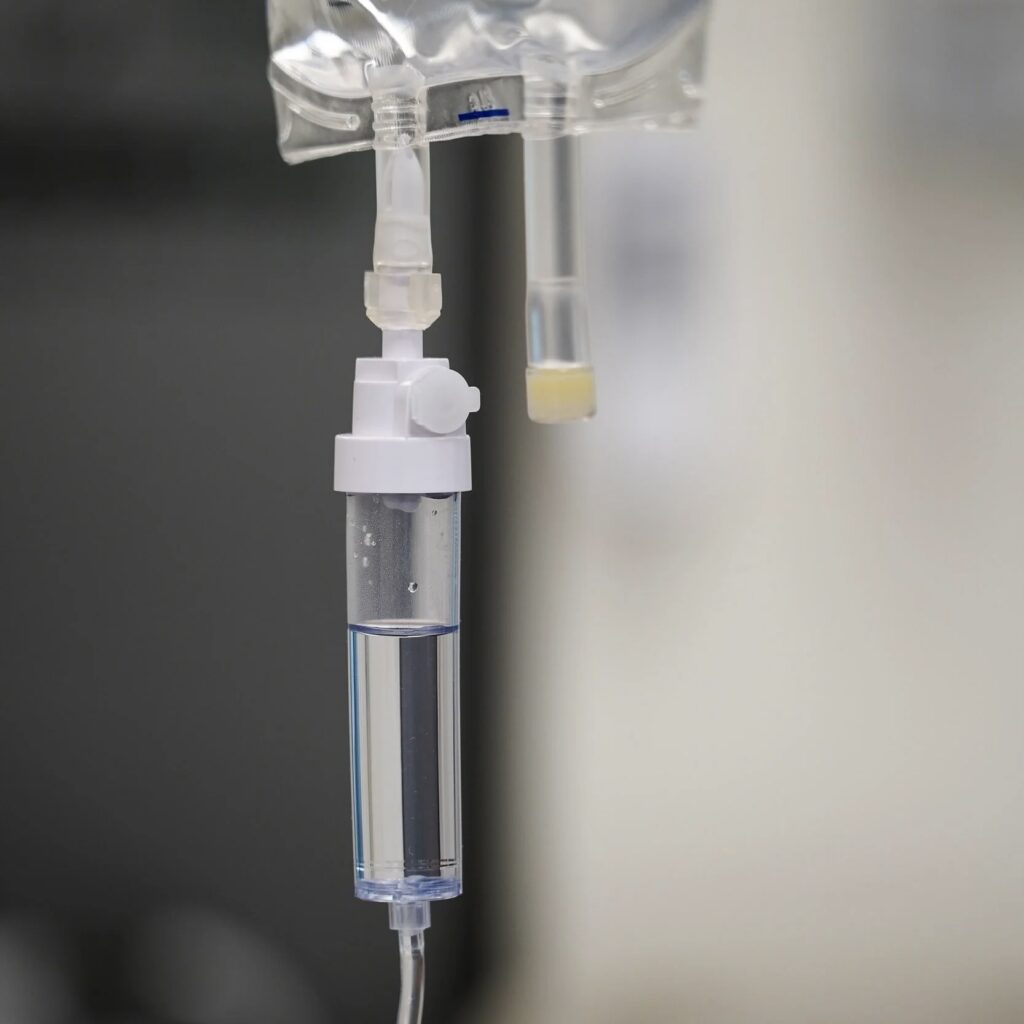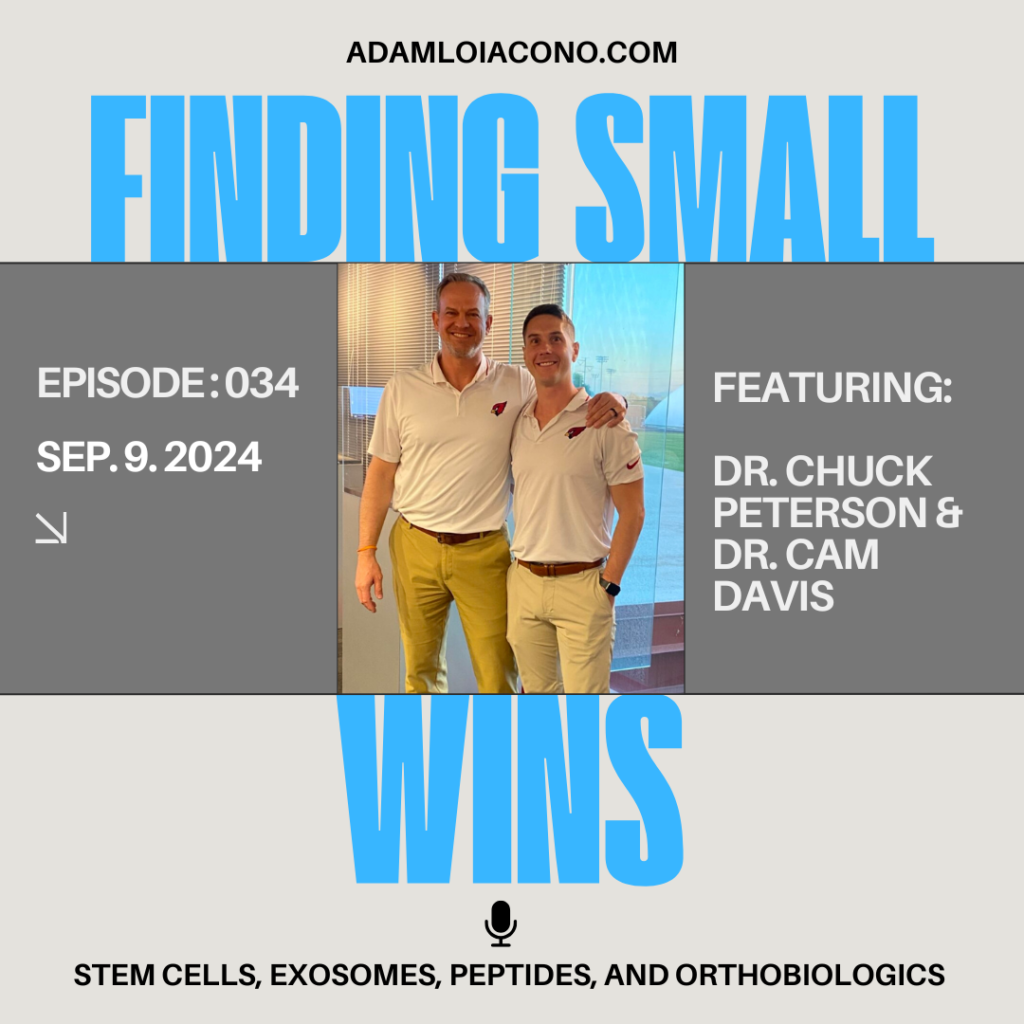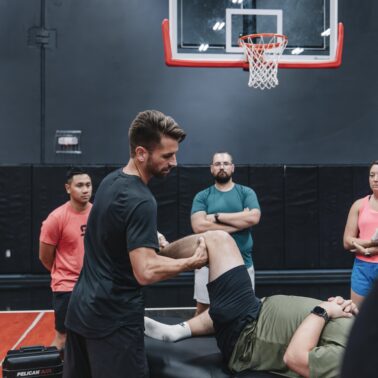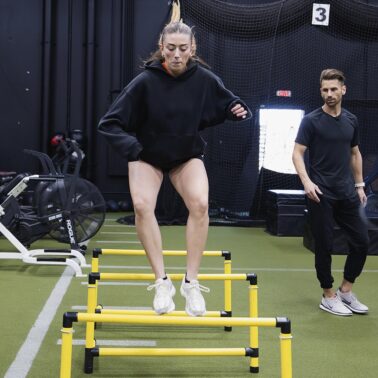Approximate Read Time: 8 minutes
“Different delivery methods for mesenchymal stem cell therapy shape where the cells travel, how they act, and ultimately how effective they may be.”
What You will learn
- Differences between IV and injection delivery of MSCs.
- Evidence on safety and efficacy.
- How delivery routes may shape rehab and recovery outcomes.
Why Delivery Methods Matter
Stem cell therapy is not science fiction or taboo — it’s here, actively used in clinical trials and increasingly in sports and orthopedic medicine. When we talk about mesenchymal stem cells (MSCs), the conversation often jumps straight to results: Does it work? Will it heal my knee? The overlooked detail is how those cells actually get into the body, and why the delivery method may shape outcomes as much as the cells themselves.
“The delivery route is not a detail—it’s a determinant of where stem cells go and how they act.”
Two of the most common routes are intravenous (IV) infusion and local injection (either intra-articular, directly into the joint, or extra-articular, around tendons or tissues). On the surface, it sounds like a simple choice: systemic versus local. But the science shows it can be more complex when we consider safety, efficacy, and clinical outcomes.
A few clinical trials have revealed that MSC therapy is being tested across cardiovascular, neurological, liver, and orthopedic conditions (Kabat et al., 2019). These studies have highlighted that delivery isn’t just a logistical choice; it’s a biological decision that influences where MSCs go, how long they persist, and what signals they release in the body (Sánchez-Díaz et al., 2021).
Intravenous Delivery: Systemic Reach
Intravenous (IV) infusion is one of the most widely used methods for administering MSCs in clinical trials and international stem cell centers. Its appeal lies in its simplicity—cells are infused through a vein and circulate throughout the body. But where those cells actually go has been the subject of intense research.
Biodistribution
When MSCs are delivered intravenously, they don’t circulate evenly like we may think. Instead, they accumulate first in the lungs, where many cells become trapped in the pulmonary microvasculature before gradually redistributing to organs such as the liver, spleen, and kidneys (Sánchez-Díaz et al., 2021). This “first-pass effect” means that the initial impact of IV MSC therapy is strongly influenced by lung physiology, which can be beneficial in conditions like acute respiratory distress syndrome, but may limit targeted delivery to joints or muscles.
Safety Profile
A common question with IV therapy is safety: do cells clump, embolize, or trigger immune reactions? The largest systematic review to date, including 55 randomized controlled trials with 2,696 patients, found that IV MSC therapy continues to appear safe. The only consistent side effect was an increased incidence of mild fever after infusion. Importantly, there was no significant increase in infection, thromboembolic events, malignancy, or death compared with controls (Thompson et al., 2020).
This favorable safety profile is why IV MSC therapy remains a cornerstone in systemic applications. Still, researchers caution that trial rigor, transparent reporting, and standardized cell characterization are critical for ensuring safety across different patient populations (Thompson et al., 2020).
NOTE: for more insights about evaluating safety measures for stem cell therapy, check out this article discussing 5 Questions to Ask Before Stem Cell Therapy
Clinical Utility
The strength of IV delivery is its systemic reach. For autoimmune or inflammatory conditions such as Crohn’s disease, MSCs’ immunomodulatory effects are more valuable than local repair from injections. IV administration allows cells to travel to sites of inflammation, release anti-inflammatory cytokines, and modulate the immune system at a global level (Kabat et al., 2019).
However, the trade-off is precision. If the goal is to regenerate cartilage in a knee or tendon fibers in the shoulder, IV delivery may be less efficient, as few cells home specifically to that tissue. Albeit less effective for a targeted, local goal, the IV intervention can be complimentary to the injection as well.
“IV MSC therapy is systemic—ideal for calming inflammation throughout the body, but less efficient for one injured joint.”
Injection Delivery: Local Precision, Targeted Effect
Where IV infusion spreads cells broadly through the body, local injection delivers MSCs directly into or around the affected tissue. This includes intra-articular injections (into a joint such as the knee or shoulder) and extra-articular injections (into surrounding tissues like tendons or fascia).
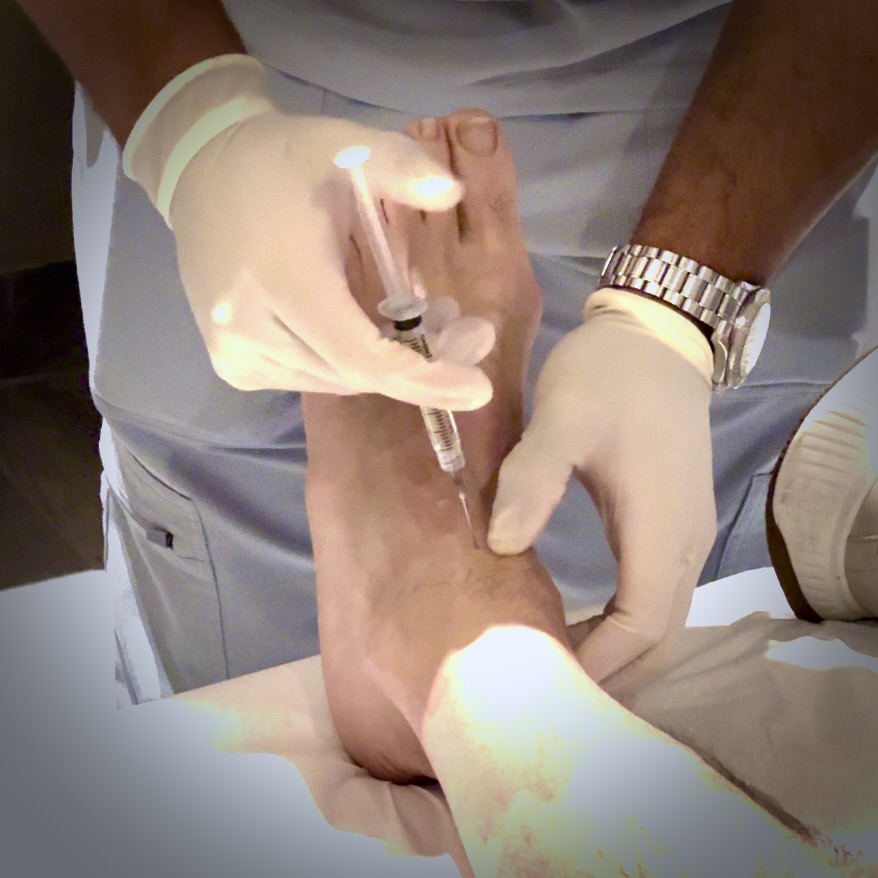
Biodistribution
Unlike IV administration, injected MSCs largely remain where they are placed. Preclinical and clinical evidence shows that intra-articular injections result in the majority of cells staying within the joint space, producing local paracrine effects such as modulating inflammation and supporting cartilage repair (Sánchez-Díaz et al., 2021). Extra-articular injections follow the same principle, with limited systemic spread but concentrated local action.
This makes injections particularly attractive for orthopedic and sports medicine applications, where the therapeutic target is specific and localized. For example, multiple clinical trials have demonstrated positive outcomes in osteoarthritis and cartilage repair when MSCs were injected intra-articular, with reported improvements in pain, function, and joint structure (Kabat et al., 2019).
Advantages
The main strength of local injections is precision. A high concentration of cells can be delivered exactly where needed, avoiding the lung “first-pass” trapping observed with IV infusion. For athletes or patients with focal musculoskeletal injuries, this localized delivery provides the best chance of directly influencing the tissue environment.
Limitations
The limitation is that injections do not exert systemic effects. If a patient’s condition involves widespread inflammation or autoimmune activity, local injections won’t address the underlying systemic drivers. Additionally, outcomes may vary based on joint environment, severity of disease, and the ability of MSCs to integrate or persist at the injection site (Thompson et al., 2020).
“Injection-based MSC therapy is like hand-watering a single plant—it’s focused, potent, and direct.”
IV vs Injection: Choosing the Right Tool
Both IV infusion and local injection are valid strategies for delivering mesenchymal stem cells, but they serve different purposes.
- IV delivery is systemic. It is best suited for conditions involving widespread inflammation, immune dysregulation, or multi-organ impact. The immunomodulatory effects of MSCs make IV a logical choice for autoimmune conditions and systemic inflammation (Kabat et al., 2019; Thompson et al., 2020).
- Injection delivery is targeted. Intra- and extra-articular injections keep cells concentrated in a local environment, making them ideal for orthopedic or sports applications such as osteoarthritis, cartilage defects, or tendon injuries (Sánchez-Díaz et al., 2021).
Think of it this way: IV is like turning on a sprinkler system to water the whole field. Injection is like hand-watering a single plant. Both can be effective—but the context matters.
Application in Rehab and Sport Performance
For physical therapists and rehab experts, understanding delivery routes matters when aligning regenerative medicine with rehab.
- In a post-ACL reconstruction patient, an intra-articular injection may directly influence joint recovery.
- In an athlete with systemic autoimmune disease or chronic inflammation, IV infusion may help calm the immune system and accelerate overall recovery.
- In both cases, stem cell delivery should be viewed not as a cure-all, but as a complement to structured rehab and performance training.
By matching the delivery method to the athlete’s condition, clinicians can better integrate regenerative medicine into the Principles, Process, and Plans of performance therapy.
“IV or injection isn’t about better or worse—it’s about matching the method to the problem.”
The Fab Five: Key Takeaways
- IV infusion distributes systemically, but most cells accumulate in the lungs before redistributing.
- Injection delivery is local, keeping cells concentrated where they are needed most.
- Safety evidence is strong: IV MSC therapy remains safe across 55 RCTs, with fever being the only consistent side effect.
- Dose matters: Intra-articular injections appear most effective in the 50–100 million cell range.
- Context is king: Systemic diseases benefit from IV, while localized injuries benefit from targeted injections.
Read More Like This
Related Podcasts
References
Kabat, M., Bobkov, I., Kumar, S., & Grumet, M. (2020). Trends in mesenchymal stem cell clinical trials 2004–2018: Is efficacy optimal in a narrow dose range? STEM CELLS Translational Medicine, 9(1), 17–27.
Sánchez-Díaz, M., Antari, M., Campos, F., Rodríguez, F., & Alloza, I. (2021). Biodistribution of mesenchymal stromal cells after administration in animal models and humans: A systematic review. Journal of Clinical Medicine, 10(13), 2925.
Thompson, M., Mei, S. H. J., Wolfe, D., Champagne, J., Fergusson, D., Stewart, D. J., … McIntyre, L. (2020). Cell therapy with intravascular administration of mesenchymal stromal cells continues to appear safe: An updated systematic review and meta-analysis. EClinicalMedicine, 19, 100249.
